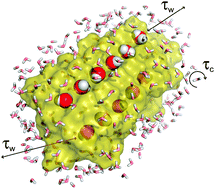High water mobility on the ice-binding surface of a hyperactive antifreeze protein†
Abstract
Antifreeze

- This article is part of the themed collection: Water in biological systems
* Corresponding authors
a
Department of Biophysical Chemistry, Center for Molecular Protein Science, Lund University, SE-22100 Lund, Sweden
E-mail:
bertil.halle@bpc.lu.se
b
Department of Biochemistry, Queen's University, Kingston, Ontario K7L 3N6, Canada
E-mail:
peter.davies@queensu.ca
Antifreeze

 Please wait while we load your content...
Something went wrong. Try again?
Please wait while we load your content...
Something went wrong. Try again?
K. Modig, J. Qvist, C. B. Marshall, P. L. Davies and B. Halle, Phys. Chem. Chem. Phys., 2010, 12, 10189 DOI: 10.1039/C002970J
To request permission to reproduce material from this article, please go to the Copyright Clearance Center request page.
If you are an author contributing to an RSC publication, you do not need to request permission provided correct acknowledgement is given.
If you are the author of this article, you do not need to request permission to reproduce figures and diagrams provided correct acknowledgement is given. If you want to reproduce the whole article in a third-party publication (excluding your thesis/dissertation for which permission is not required) please go to the Copyright Clearance Center request page.
Read more about how to correctly acknowledge RSC content.
 Fetching data from CrossRef.
Fetching data from CrossRef.
This may take some time to load.
Loading related content
